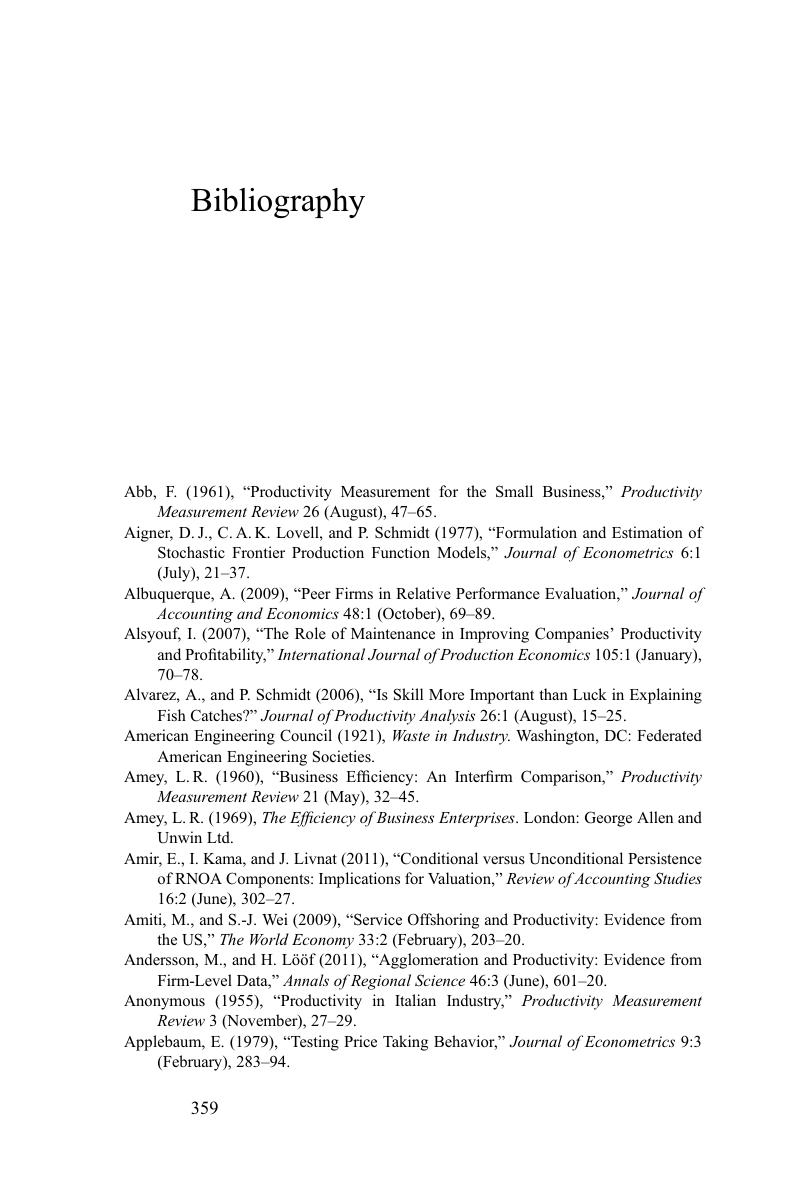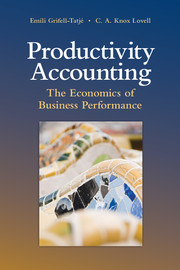Bibliography
Published online by Cambridge University Press: 05 January 2015
Summary

- Type
- Chapter
- Information
- Productivity AccountingThe Economics of Business Performance, pp. 359 - 378Publisher: Cambridge University PressPrint publication year: 2015



